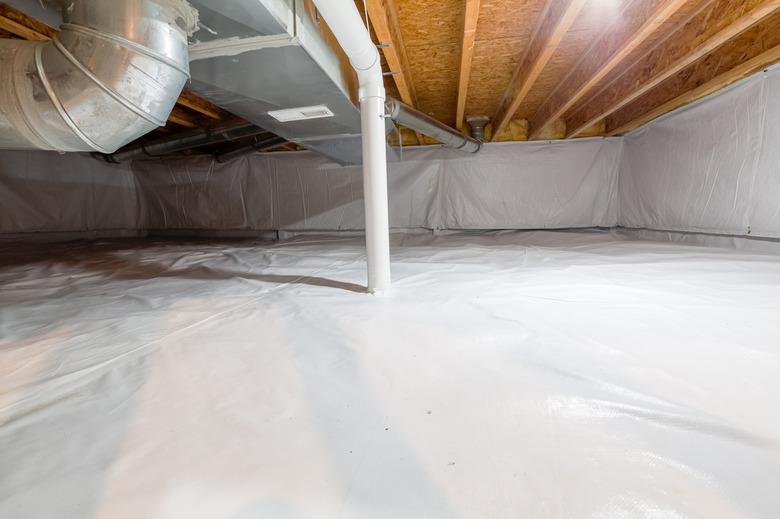How To Cover An Opening To A Crawl Space
We may receive a commission on purchases made from links.
You can save a lot on your energy bill by providing a proper cover for your crawl space opening. Air coming through the opening can create a cold draft in your home, and an uninsulated cover that fits poorly probably won't stop it. In fact, a cold draft may have prompted you to consider going into the crawl space and adding more floor insulation.
Covering the crawl space opening — which is a code requirement — is much easier and may make that extra insulation unnecessary. Cold air can still get into the crawl space through the vents, which also have to be there, but vents are much smaller than a person-size opening. Maybe you aren't convinced that making an airtight cover will help keep your house warmer. If not, consider that it will also keep mice, rats, and other critters out of the crawl space, where they can easily get into the house. Here's what you need to know about covering crawl space openings.
Crawl Space Openings Aren't All the Same
Crawl Space Openings Aren't All the Same
Some crawl spaces are large and have plenty of headroom, while others are cramped and a claustrophobic's nightmare. In the same way, some openings are large and spacious, while others are so small that a full-grown adult can barely squeeze through. In most cases, the opening is on the side of the foundation at ground level, but sometimes, it has a well dug 1 or 2 feet into the ground for better access. In some homes, the only access to the crawl space is through a trap door in the floor. Each opening calls for a different cover.
Bulkhead doors are often the best covers for an opening with a well because they provide maximum access to the opening. They rest on the perimeter of the well and are either hinged so you can swing them open or have handles so you can lift them. When the opening is on the side of the foundation, you usually need just a single panel. It can also be designed to swing or be lifted, but either way, it has to latch securely to be effective.
Construct a Simple Cover
Construct a Simple Cover
An opening in the side of the foundation is the simplest to cover because a single piece of CDX plywood will do the job. To insulate it, all you have to do is glue a sheet of 2-inch rigid foam insulation to the inside using construction adhesive. Make sure the foam is slightly smaller than the plywood so the edges of the panel can seal well.
To provide the seal, you need a wood frame around the opening, so if one isn't there, you may have to build one. The frame should have a stop made of 1x2 lumber against which the cover rests. Stick foam weatherstripping to the stop to prevent airflow and devise a way to wedge the cover against the stop and compress the weatherstripping. If the cover swings on hinges, a sturdy, tight-fitting barrel bolt should do the trick. If the panel lifts out, a pair of barrel bolts — one on either end — will work.
Build a Bulkhead Cover
Build a Bulkhead Cover
When the crawl space opening is inside a window well, it often makes more sense to cover the whole well than to just cover the opening, and the way to do this is to construct a bulkhead door or panel. If the well is made of concrete, as most are, it's a good idea to construct a wood frame for the top using 2x4s and securing them to the concrete with screws or nails.
You should also construct a frame for the cover because the plywood panels will warp when left in the sun and rain if they aren't secured to a frame. After you've constructed the frame and attached the plywood, affix foam insulation to the inside. Apply weatherstripping to the frame around the window well and either drop the bulkhead into place or install it on hinges. One or two hook latches attached to the sides of the door and the sides of the well frame should hold the door tightly in place.
